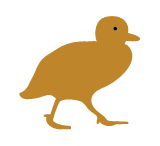Art and the Environment: Creative Practice and Ecologies investigates how artists and designers engage with the many interconnected systems in our environments — biological, social, technological, and cultural. This course examines how artists, designers, and contemporary interdisciplinary creative practices respond to the ecological crises of our era by highlighting the interdependencies among humans, nonhumans, and built environments. Since the late twentieth century, artists and designers have critically engaged with systems of urbanisation, environmental degradation, capitalism, and extractivism. Students will explore how ideas of ecology have developed from Western scientific and philosophical traditions, while recognising that First Nations’ worldviews offer transformative ways of conceiving relationships among land, water, air, and all living things. By engaging with key concepts from eco-criticism, deep ecology, and new materialism, the course highlights art as a space for rethinking the ethics and aesthetics of coexistence, including community repair and kinship. Through lectures, readings, activities and discussions, students will analyse how diverse artistic practices create, question, and connect multiple ecologies — imagining new possibilities for living well within a shared and evolving world.
Learning Outcomes
Upon successful completion, students will have the knowledge and skills to:
- demonstrate an understanding of the historical, social, and political contexts that have shaped creative responses to ecological issues in art and design;
- verbally articulate and present with confidence critical perspectives on the relationship between art, design, and the environment, drawing on key theoretical and creative frameworks;
- adopt an interdisciplinary perspective that recognises the interconnected biological, social, technological, and cultural systems informing contemporary ecological thought and creative practice; and;
- work collaboratively to investigate and communicate complex ecological ideas through research, discussion, and participatory activities that model interdependence and collective inquiry.
Indicative Assessment
- Catalogue essay accompanied by a list of 5 key design/ artworks (2,000 words) (40) [LO 1,3]
- Critical visual analysis of 2 key art and/ or design creative works (1,000 words) (25) [LO 1,3]
- Presentations (10 minutes per person), working in groups, investigating a case study of environmental art/design (20) [LO 1,2,3,4]
- In-class participatory activities scheduled for each lecture (15) [LO 1,2,3,4]
The ANU uses Turnitin to enhance student citation and referencing techniques, and to assess assignment submissions as a component of the University's approach to managing Academic Integrity. While the use of Turnitin is not mandatory, the ANU highly recommends Turnitin is used by both teaching staff and students. For additional information regarding Turnitin please visit the ANU Online website.
Workload
130 hours of total student learning time made up from:
a) 36 hours of contact over 12 weeks: 24 hours of lectures and 12 hours of tutorials; and
b) 94 hours of independent student research, reading and writing.
Requisite and Incompatibility
Prescribed Texts
Refer to Canvas
Preliminary Reading
Refer to Canvas
Assumed Knowledge
N/A
Fees
Tuition fees are for the academic year indicated at the top of the page.
Commonwealth Support (CSP) Students
If you have been offered a Commonwealth supported place, your fees are set by the Australian Government for each course. At ANU 1 EFTSL is 48 units (normally 8 x 6-unit courses). More information about your student contribution amount for each course at Fees.
- Student Contribution Band:
- 14
- Unit value:
- 6 units
If you are a domestic graduate coursework student with a Domestic Tuition Fee (DTF) place or international student you will be required to pay course tuition fees (see below). Course tuition fees are indexed annually. Further information for domestic and international students about tuition and other fees can be found at Fees.
Where there is a unit range displayed for this course, not all unit options below may be available.
| Units | EFTSL |
|---|---|
| 6.00 | 0.12500 |
Course fees
- Domestic fee paying students
| Year | Fee |
|---|---|
| 2026 | $4500 |
- International fee paying students
| Year | Fee |
|---|---|
| 2026 | $5820 |
Offerings, Dates and Class Summary Links
ANU utilises MyTimetable to enable students to view the timetable for their enrolled courses, browse, then self-allocate to small teaching activities / tutorials so they can better plan their time. Find out more on the Timetable webpage.
Class summaries, if available, can be accessed by clicking on the View link for the relevant class number.
Second Semester
| Class number | Class start date | Last day to enrol | Census date | Class end date | Mode Of Delivery | Class Summary |
|---|---|---|---|---|---|---|
| 9080 | 27 Jul 2026 | 03 Aug 2026 | 31 Aug 2026 | 30 Oct 2026 | In Person | N/A |


